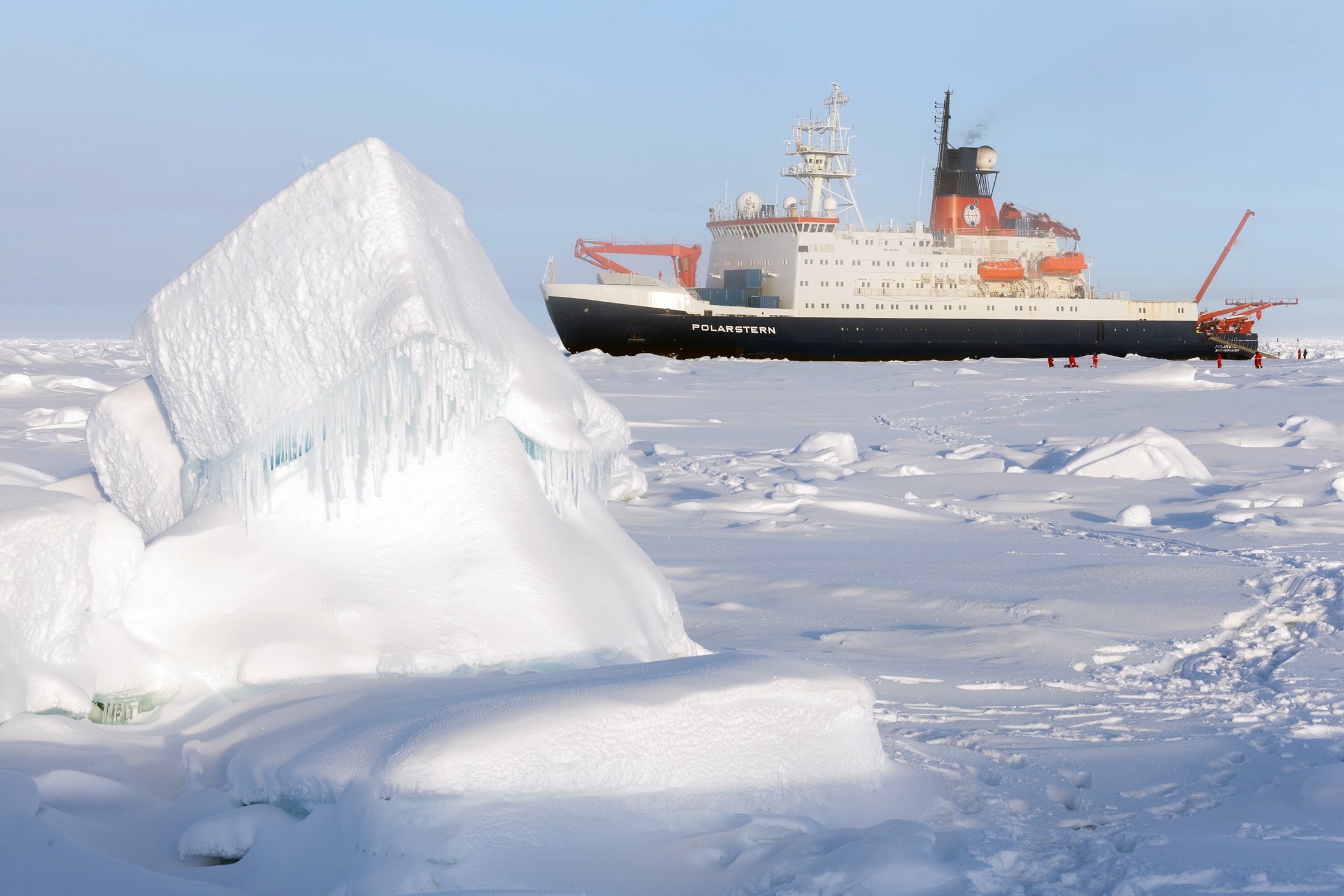NARRAGANSETT, R.I., — October 1, 2019 — Few regions on Earth have warmed as much as the Arctic over recent decades, but because of its near inaccessibility in winter, scientists lack year-round observations from the area. To gain new insights from this epicenter of global warming, four URI Graduate School of Oceanography scientists will soon join the largest Arctic science expedition in history.
Called MOSAiC (Multidisciplinary drifting Observatory for the Study of Arctic Climate), the $150-million-dollar expedition will include 600 participants from 19 different countries. At the center of the expedition is the research icebreaker Polarstern. Rather than navigate through the treacherous sea ice, the German icebreaker will instead let itself be trapped in the ice for 13 months. Once frozen in the Central Arctic, the ship will drift with the ice at an average speed of 7 kilometers (or nearly 4 and a half miles) per day. Researchers on board will gather urgently needed data on the interactions between the atmosphere, ocean and sea ice, as well as on the ecosystem, while an international fleet of four icebreakers, helicopters and aircraft will supply the team during its voyage.
GSO Professor Brice Loose, Marine Research Scientist Robert Campbell, Postdoctoral Fellow Alessandra D’Angelo and marine research specialist Cecilia Gelfman will join the expedition at various times throughout the coming year.
Campbell and Gelfman will sample and study zooplankton—tiny, drifting organisms—from below the ice to better understand how they survive the hostile conditions of the Arctic winter. The team will create an energy budget based on the reproductive, growth and respiration rates of the organisms to understand the amount of microscopic plants and ice algae they use.
In contrast to traditional expeditions where researchers spend 100% of their time focused on their own work, research scientists on the Polarstern have agreed to organize as a collective where each will focus approximately 30% of their time to their own research with the remainder for the greater good of the team. This includes tasks such as collecting and analyzing ice cores and water samples.
“Given the complexity and the scale of the expedition,” says Loose, “it’s clear that the only way to extend all of these measurements for a full year is to work together with other investigators.”
Loose and D’Angelo, who journeyed to the Arctic as part of this summer’s Northwest Passage Project, will continue their research into the release of ocean methane—a potent greenhouse gas—in the Arctic, a topic of critical importance to our understanding of Earth’s climate. “There’s quite a bit of seabed methane being liberated from the Arctic,” says Loose. “And there seems to be a mismatch between what’s released from the seabed and what escapes into the atmosphere. If the initial releases of methane are modest and bacteria use enough of it for food, they may serve to offset the amount of the greenhouse gas that escapes to the atmosphere.”
Loose and Campbell will join the expedition for its second leg, starting in late November, while D’Angelo and Gelfman will join for the third and fourth legs. While each leg is approximately two months, the logistics of getting to and from the ship during the winter months are likely to add an additional month of travel time.
Because of the challenging Arctic conditions, MOSAiC participants had to go through extensive training. Campbell, Gelfman and their team took survival at sea and Arctic safety training, and learned how to sample ice, drive snowmobiles and even handle a gun. “If you’re going to be out on the ice somebody has to have a gun,” says Campbell. “They can’t participate in the science, their job is to watch for polar bears.”
For Campbell, this will be the second time he’s spent extensive time in the Arctic during the winter. In 1997 he spent months aboard the Canadian Coast Guard Ship Des Groseilliers which, like the Polarstern, was purposefully frozen in the pack ice, although much farther south from the North Pole, as part of the Surface Heat Budget of the Arctic Ocean (SHEBA) study. The MOSAiC planners used lessons learned from previous ice camps like SHEBA as they designed the expedition. Campbell says the 1997 study was not without its challenges. “At one point the ice actually split in half, and some of the labs on the ice were destroyed.”
MOSAiC participants arriving at the Polarstern during the winter months will experience the polar night, when the sun remains below the horizon 24 hours per day, while those arriving in the spring will see 24 hours of light. Despite the grueling conditions, the months spent in the Central Arctic may end up feeling short. “You work so hard and for long hours, and you have so much to do,” says Campbell. “Even though two months seems like a long time, it also feels like not enough time to get it all done. It goes by really quickly.”
By the time the Polarsten completes its drift in September 2020, the multidisciplinary collection of MOSAiC scientists hope to have gathered a year’s-worth of new observations that will enhance future climate change projections for the Arctic. As the project’s mission states, many processes in the Arctic climate system are poorly represented in climate models because they are not sufficiently understood. Loose agrees that to address these gaps in our knowledge, researchers should conduct more projects like MOSAiC in the Arctic. “We need to gather data year-round, from the atmosphere down to the ice and then into the ocean, and we need to work across disciplines.”
The MOSAiC project was designed by an international consortium of leading polar research institutions, led by the Alfred Wegener Institute, Helmholtz Centre for Polar and Marine Research (AWI).

